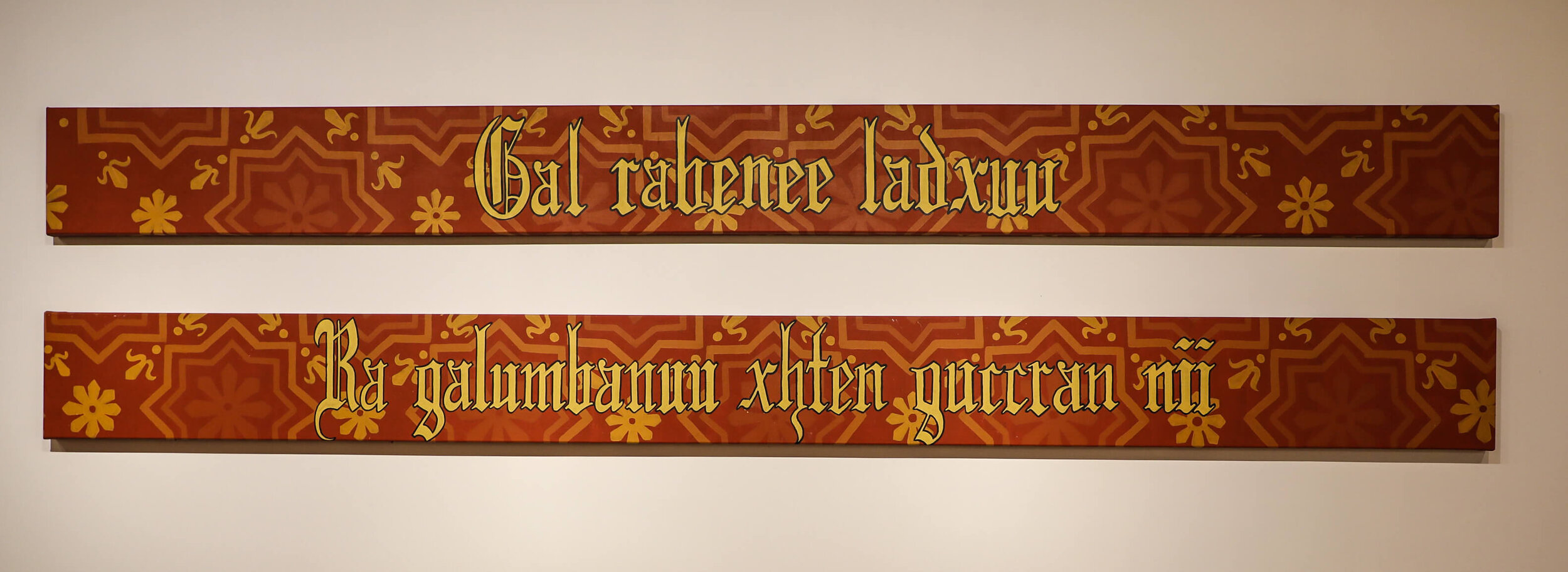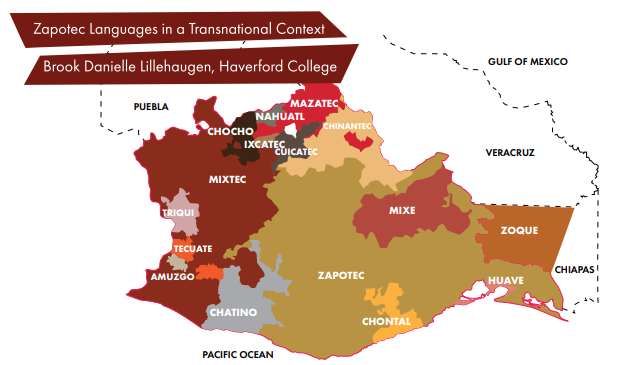Oaxacalifornia: For the Pride of Your Hometown, The Way of the Elders, And In Memory of the Forgotten
Tlacolulokos (Mexico, Dario Canul b. 1986 & Cosijoesa Cernas, b. 1992). For the Pride of Your Hometown/ Para el orgullo de tu pueblo (Gal rabenee ladxuu), The Way of the Elders/ Por el camino de los viejos (Ra galumbanuu xhten guccran nii), 2017. Acrylic on canvas, 236.22 in. x 27.16 in, MOLAA Permanent Collection.
Tlacolulokos (Mexico, Dario Canul b. 1986 & Cosijoesa Cernas, b. 1992). And In Memory of the Forgotten/ Y el recuerdo de los olvidados (Ne guitenala’dxinu ca binni ma cusia’ndanu), 2017. Acrylic on canvas, 236.22 in. x 27.16 in, MOLAA Permanent Collection.
Stop 5
“Language is one of the characteristics that defines the identity and culture of a people, it contains a worldview. Zapotec is a linguistic family with more than 50 regional variants, which is why it is referred to as Zapotec cultures and not as a single, unified culture. Today, one of the many ways in which communities fight for self-determination is through the recovery, defense and use of their language in the face of discrimination, something they have endured for ages. In Los Angeles, many indigenous migrants learn English as a second language and Spanish as a third; and their children, often U.S. citizens, learn neither Spanish nor Zapotec as a result of the pressures to assimilate into American culture.”
This map shows families of indigenous languages spoken in the state of Oaxaca, which is culturally, ethnically, and linguistically diverse. Some of these language families are related to each other, for example, Zapotec and Mixtec. Others are not related, such as Mixe and Chatino.
Based on map by Felipe H. Lopez. Published Pamela Munro, Brook Danielle Lillehaugen & Felipe H. Lopez, 2008. Cali Chiu? A course in Valley Zapotec, Volume 1. Lulu Publishing. Used here wiht Permission.
Click below to continue your journey.



